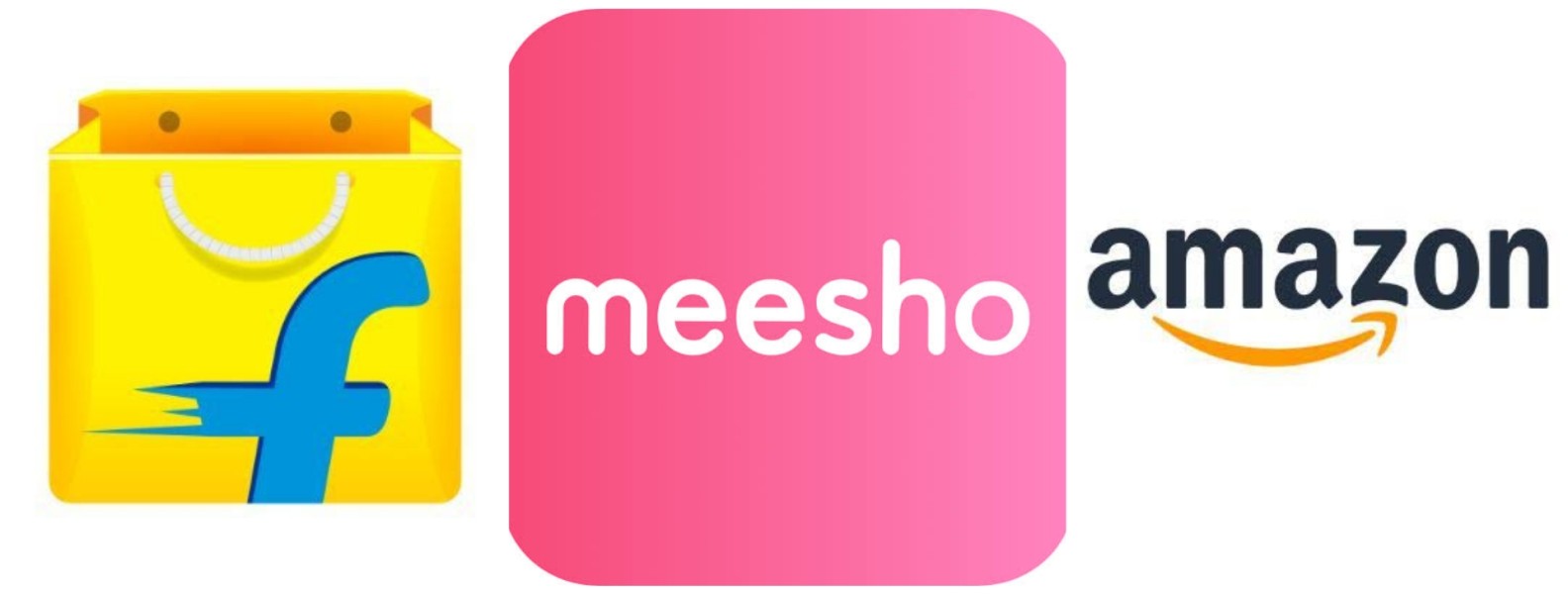Meesho Mall- The New Strategy Implemented To Give Wings To The Zombie Startup.
According to Dhiresh Bansal, Meesho's chief financial officer, companies can now choose to be featured on Meesho Mall for a fee to have a unique discovery experience from the central platform

Meesho, a name which used to bring smiles to the faces of many online consumers due to affordable products, is now witnessing red flags in their business. From getting the title of zombie startup to earning the title of a company famous for online scams, Meesho is now facing tough competition from its rivals. Let’s see what the company is doing to stay tough in the winds of the survival game.
What made Meesho so famous and lucrative?
When SoftBank-backed Meesho transitioned from a reseller-based social-commerce platform to a full-fledged e-commerce marketplace two years ago, colossal e-commerce platforms had no idea they would become a multibillion-dollar corporation and a force to be reckoned with. The company rattled the horizontal e-commerce sector last year with a million vendors and USD5 billion in total sales, in times when India’s corporate world was waiting to see if Reliance Jio would break the Amazon-Flipkart duopoly.
What was Meesho’s ultimate success-winning approach?
Meesho’s zero-commission strategy distinguishes it from its big competitors and helps it pull the rug out from under them. Small merchants flocked to Meesho’s platform, due to VC funding that fueled the e-commerce startup’s technology and marketing. Because there were no commissions, merchants could price their things substantially lower on the site than on other marketplaces. And hence the company can sell at such affordable prices.
The company has been fine-tuning its strategy after winning vendors, buyers, and volumes by linking unbranded products at the bottom of the e-commerce pyramid with its target clients. By offering branded merchandise to its 100-million user base, a substantial portion of which is scattered across India’s aspirational small towns (2 and 3-tier cities), it has entered the area of its larger rivals, Flipkart and Amazon.

The emergence of Meesho Mall.
Now, the startup is charging brands a fee in the process. This is intended to provide it with much-needed money. The new process, Meesho Mall, is at the core of this new commission-based, branded-merchandise strategy. Last year, Meesho Mall was integrated into the main app to provide higher-priced branded products. Still, according to sources, the firm has been more aggressively interacting with brands to onboard them in recent months.
Enhancing take rates.
In contrast to its zero-commission concept, Meesho Mall charges brands fees ranging from 2% to 5% of the order amount. This would raise the take rate or the overall fees charged by the platform to sellers for each transaction.
Meesho has recently approached various businesses about joining Meesho Mall and has suggested an overall take rate of 20%-25%. This would put Meesho Mall’s platform take rate closer to Flipkart and Amazon’s.
Understand this with the example. According to a recent note from analyst company Jefferies, for an Indian ethnic clothing product for women priced around INR500, Amazon’s total take rate is 32%, Flipkart’s is 23%, and Meesho’s is 14%. This is mainly because Meesho does not charge any commission or set fees to sellers, and most of its take rate covers shipping expenses. However, this will change with the new offering.
Meesho Mall may seek to enhance the percentage of branded merchandise. 90% of the platform’s 2.5 million daily orders are unbranded. In certain aspects, Meesho Mall might aid in reducing the platform’s product returns. This is because MEESHO MALL is a new area within the MEESHO BUYER app, a collection of quality-certified items on the platform. In many cases, the return is because of the reception of the wrong product. Therefore, if the product gets a label ‘branded’, it may increase the customer’s satisfaction with receiving quality products.

According to Dhiresh Bansal, Meesho’s chief financial officer, companies can now choose to be featured on Meesho Mall for a fee to have a unique discovery experience from the central platform. As a result, these brands receive an authentic Mall label. The company do authentication to ensure that goods are directly from the manufacturer. They will be allocated an account manager to look after their experience, requirements, etc. If this pricing model is successful, will the e-commerce player switch to a commission-based plan for the second time?
Is the zero-commission game over?
According to Bansal, Meesho’s general strategy has not changed, and they will continue to have a zero-commission play on the platform. The new move is more of a reaction to the customers’ buying preferences. He claims that buyers do not limit their purchasing to unbranded goods. Yeah, that’s because India has a high portion of the middle-class income group, and for them, several products are just for their utility rather than their preference. So they do not care whether the product is branded or not.
Branded consumption plays a vital role in areas of personal grooming. It is much higher in other sectors, such as beauty and personal care. When compared to, for instance, clothes, most of the offline world is unbranded. Meesho has dabbled in a few areas. What if customers introduced brands to the platform? How would the customers react? Or does that strike a chord with them? According to the company, the findings have been favourable.
The business has begun experimenting with two sectors — footwear and beauty and personal care (BPC) — where branded items are in high demand even offline.
Meesho attempted to replicate offline brand presence, particularly those companies that resonate with their clients. For example, in footwear, there are several brands, such as Paragon, Liberty, and others, as well as some D2C businesses on the beauty side, such as Mamaearth and some other national names. So those have been the experiments that have typically resulted in favourable traction for the company, acting as a catalyst to drive the new commission-based strategy.
So, will the platform’s overall market share of branded items grow?
Meesho has a combination of branded and unbranded commodities available in offline shops. The ratio of unbranded to branded consumption is around 85%:15%. As a result, the company does not believe the platform’s overall appearance will alter. Once again, this is customer-backwards thinking; yeah customer is the king of the market!

Is the company trying to position itself as a branded platform? It seems that Meesho doesn’t intend to be a brand-heavy platform. That’s not what their customer base is. Instead, they are choosing, or rather say, experimenting on certain domains to see if the new strategy works.
How zero-commission strategy force the rivals to re-think their models?
If Meesho Mall expands, it will compete with Amazon and Flipkart, which generally have exclusive deals with significant companies. In recent years, Amazon and Flipkart have attempted to match Meesho’s low-cost, high-volume model.
Meesho’s zero-commission strategy prompted Flipkart to develop Shopsy in 2021, which began as a reseller platform but rapidly evolved into a full-fledged marketplace for lower-cost items. Yes, now one can imagine how powerful was this zero-commission strategy.
Amazon purchased the reseller platform GlowRoad last year, and it recently revised seller commissions across multiple categories to make costs more competitive to compete with Meesho.
How could Meesho Mall help in improving the return pickup process?
Meesho’s decision to push branded items may also help them address the issue of excessive product returns, ah, many of them because of the reception of the wrong product! Meesho estimates that overall returns on its platform are roughly 25%, with customer returns or reverse pick-up accounting for 8%-9% and return to origin’ or unsuccessful efforts to deliver a product accounting for the remainder.
This might also result from Meesho’s reliance on third-party logistics providers to execute orders. This is something the company need to be very vigilant about. Several Meesho vendors claim that because of the enormous returns, they frequently have to spend on forward and reverse shipping for numerous purchases and are not profitable on the site.
Earlier this year change in its goods return policy, which introduced extra product inspections, also created some dissatisfaction among vendors. According to several merchants, collecting reimbursement when buyers return faulty merchandise has gotten more complicated.
Meanwhile, some sellers claim that the cost of conducting business on the site has risen significantly. Meesho has consistently raised its rates. For example, until a few months ago, the return rate per order was INR100. It was raised to INR150, then to INR160, and now to INR200, claims a vendor.
Mr Bansal, on the other hand, disputes this. In January, the company gave sellers the option of selecting from various third-party logistics businesses. Some are paid INR100-INR110, while others are paid INR130-INR140. Meesho provides suppliers with information on a logistics partner’s performance in their PIN codes. They are given the option to express their preference. Then Meesho tries to meet as many of their preferences as possible.
Will this new approach help in increasing revenue?
Fulfilment charges (mostly shipping and server expenses) account for most of Meesho’s income (85%). Advertisements provide 15% of revenue. Seller fees, even though they are now a small portion of the high-priced branded items, might enhance the firm’s margins when it aims for profitability.
Meesho’s market shift, on the other hand, has not been without hazards. It squandered approximately USD 430 million in a single year. Its net margin shrank even as sales increased, as the business spent INR2 for every INR1 earned in FY22. That kind of cash burn was no longer possible as the financial situation shifted. Therefore, the firm must be tremendously cautious so that the firm does not replicate the loss of the previous cash burn.
The startup spent a lot of money on advertising last year, especially since it switched from a reseller business to a marketplace model and had to spend money on client acquisition. However, the corporation claims to have decreased ad spending by 80% this year.
The firm claims to have reduced cash burn by 90% yearly to USD10 million-USD12 million each quarter. This can help provide a cushion for the company.
Conclusion.
Meesho last raised USD 570 million in 2021 and is estimated to have around USD 400 million in the bank. As VC financing dried up and profitability became increasingly important, Meesho was forced to decrease expenses while increasing sales. There has also been some talk regarding an IPO, which Mr Bansal says is 1.5-2 years after. Let’s see if this new model can act as wings and help the company to fly again, in-between powerful birds like Amazon and Flipkart.





